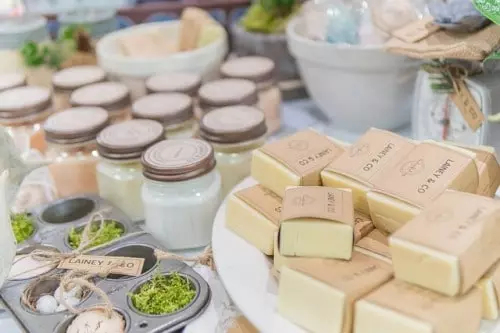Types of Soap Making
Making soap is a fun and versatile craft. Liquid soap, Natural Soap, and glycerin soap are some of the popular projects. You can make plain soap bars and scented soap bars in any color and shape you want. You can also make a soap containing pressed flowers or small toys such as rubber fish and plastic molds. The possibilities are endless.

You have a lot of options for making your soap. From the simple melt and pour method to the dangerous hot process method, there’s a process that’s perfect for your needs. Understanding the pros and cons of each way can help you choose the right one that’s best for you.
Different types of Soap Making
There are four basic methods for making soap, they are,
Melt and Pour Soap Making
Melt and pour soap making is probably the easiest way, to begin with, soap making. A process in which you melt pre-made soap blocks and add your scent. The great thing about melt and pour soap is that it’s simple to make translucent soap, and the design possibilities are endless.
Soap Quality – Moderate
Difficulty – Easy
Safety concerns – Heat
Suitable for kids – with supervision
Time for the cure – A few hours
Cold Process Soap Making
This is the most common method of making soap from scratch with lye and natural essential oils. The possibilities are endless when it comes to cold process soapmaking; you have complete control over every single ingredient you use. This method is perfect for you if you are interested in regulating all the ingredients in your soap.
Soap Quality – High
Difficulty – Hard
Safety concerns – Chemicals
Suitable for Kids – No
Curing Time – Several Weeks
Hot Process Soapmaking
Hot process soap making is almost the same thing as cold process soap-making, except a source of heat, is used to speed up the chemical reaction that creates soap. In this method, the soap is cooked in a crockpot.
Soap Quality – High
Difficulty – Hard
Safety concerns – Heat, Chemicals
suitable for Kids – No
Curing Time – A Few Days
Rebatching or Milling
A method of grinding up bars of soap, adding water or milk, and re-blending them. While it isn’t the most popular method, it is ideal for the soapmaker who wants to make handmade soap without using a caustic lye solution.
Soap Quality – Moderate
Difficulty – Easy
Safety concerns – Heat
suitable for Kids – With Supervision
Curing Time – A few Days